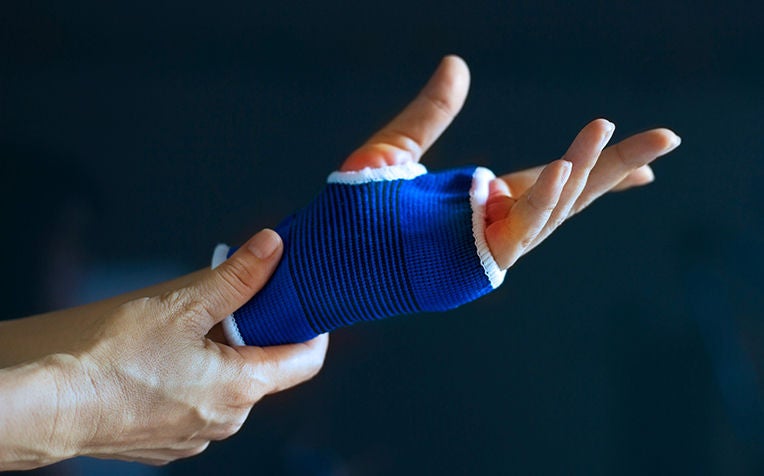
Hand injury can be due to an accident or repetitive stress to the fingers or wrist.
A minor hand injury can be treated at home, but a major hand injury will require medical treatment followed by physical therapy to rehabilitate the hand.
“Common causes of trauma injuries include falls, cuts from knives or glass as well as workplace injuries. A repetitive stress injury is usually associated with overuse of the hand over a prolonged period of time,” says Ms Yang Zixian, Principal Occupational Therapist, Department of Occupational Therapy at Singapore General Hospital (SGH), a member of the SingHealth group.
Types of hand injury
The different types of hand injury, which share symptoms such as stiffness, severe pain, swelling, bruising and difficulty in movement, are:
- Sprains
- Fractures
- Tendon and nerve injuries
- Tendonitis, e.g. trigger finger, trigger thumb
- Carpal tunnel syndrome
Whether you develop a trauma injury while playing sports or a repetitive stress injury at work, a painful hand injury requires timely medical treatment to prevent permanent damage. Treatment is determined by the severity of your injury, your age and general state of health, as well as your occupation.
Hand rehabilitation is key to recovery
Hand injury treatment – which can range from a splint, brace, and cast, to surgery – is usually followed by a prolonged period of rehabilitation therapy by an occupational therapist. Hand rehabilitation is designed to regain range of motion, prevent joint stiffness and strengthen the muscles of the hand and. It includes the following procedures:
- Heat treatment
- Mobilisation exercises
- Strengthening exercises
“If you need to return to a job with high physical demands, you may also go through simulated work hardening programmes,” says Ms Yang. Such programmes involve real or simulated work tasks designed to maximise abilities to successfully return to work.
If you have a repetitive stress injury, the occupational therapist may also advise you on joint protection techniques. You may receive important pointers on proper ergonomics, such as workstation posture, the position of your computer, and how to use your keyboard.
If your injury is severe, the occupational therapist will teach you lifelong strategies to cope with your daily activities and function independently.
“Rehabilitation is key to recovery after a hand injury. It empowers you to be self-sufficient and return to optimal functioning in your daily life,” says Ms Yang.
Precautions
You will need to take precautions at home to support your recovery. If you have had a traumatic injury, you should avoid heavy lifting and exerting your affected hand in the initial stages. If you have a repetitive stress injury, you will need to minimise use of the affected hand while avoiding overuse of the unaffected hand.
Tips to prevent hand injury
- Adopt proper joint protection techniques and prevent repetitive overuse of your hands in daily activities.
- Try to spread out household chores across the week, instead of accumulating tasks to be completed over the weekend.
- While at work, take responsibility for your own safety when handling equipment, moving heavy objects and performing other such tasks.
- Use personal protection equipment wherever necessary.
Ref: Q15
Contributed by


















 Get it on Google Play
Get it on Google Play